Lizards are one of the most popular pets in the world. They’re low-maintenance, and they come in a variety of shapes and sizes. If you’re considering getting a lizard, it’s important to know how to keep them warm.
In this article, we will discuss different methods you can use to keep your lizard warm without a lamp.
How Cold Is Too Cold for A Lizard?
Every lizard species has different temperature requirements. In general, however, most lizards do best in warm environments and will become lethargic and sluggish when the temperature drops too low. If you notice your lizard becoming less active or seemingly uncomfortable, it’s a good idea to raise the ambient temperature in its enclosure.
There are a few ways to do this, and which method you use will depend on the setup of your lizard’s enclosure.
- If you have a glass or plastic terrarium, for example, you can place a heat mat on one side of the tank to create a warm basking spot.
- Alternatively, you can use a ceramic heat bulb to raise the overall temperature inside the terrarium.
- Another option is to use a reptile heating pad. This can be placed under the lizard’s enclosure to provide gentle, constant heat. Reptile heating pads come in different sizes and wattages, so make sure you choose one that is appropriate for your lizard’s home. [1]
Signs And Symptoms A Lizard Is Too Cold
If your lizard is too cold, they may start to show certain signs and symptoms. Some of these may be more subtle than others. Here are some of the most common signs that a lizard is too cold:
- They become lethargic and stop moving around as much
- They start to lose their appetite
- They stop basking in the sun or under a heat lamp
- Their skin starts to look dull and dry
- Their color starts to fade
- They start to sleep more than usual
If you notice any of these signs, it’s important to take action quickly to warm your lizard up. The good news is that there are a few different ways you can do this.
Another way is to use a heat lamp. You can buy these at most pet stores, and they work by providing extra heat for your lizard. Just make sure you don’t put the lamp too close to your lizard, as this can cause burns. You should also turn the lamp off at night so your lizard can get some rest.
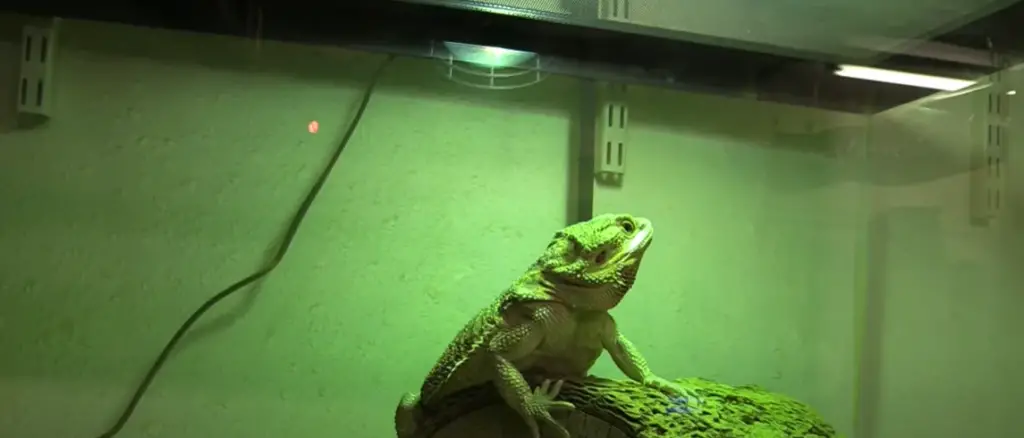
Lastly, you can try using a heating pad. These work similar to heat lamps, but they’re not as intense. Just make sure you put the heating pad on a low setting, and put a towel or something else soft between the heating pad and your lizard. [1]
Digestive Problems
Lizards are ectotherms, which means that they rely on external sources of heat to regulate their body temperature. In the wild, lizards bask in the sun to warm up and become more active. When they get too hot, they’ll find a shady spot to cool down.
In captivity, we need to provide our lizards with the proper temperature gradient so they can thermoregulate effectively. If the ambient temperature in their enclosure is too cool, they will become sluggish and may stop eating. This can lead to serious digestive problems and even death.
There are a few things to keep in mind when using a basking lamp:
- The basking area should be large enough for your lizard to move away from the heat if it gets too warm.
- The basking lamp should be on one side of the enclosure so your lizard can choose to bask or not.
- The basking lamp should be the only source of heat in the enclosure. If the ambient temperature is too warm, your lizard will become stressed and may stop eating.
If you’re not using a basking lamp, you can still provide a warm environment for your lizard by using a heat mat. Heat mats emit infrared radiation, which can be used to raise the temperature in a small area. [1]
Lethargy/Unresponsive
One of the most common problems people have with keeping their lizards warm is that the lizard becomes lethargic and unresponsive. This is usually a sign that the temperature is too low for the lizard and it needs to be increased. If your lizard is behaving this way, make sure to check the temperature of its enclosure and raise it if necessary.
There are a few ways to make your lizard’s enclosure warmer.
- Use a heat lamp. Heat lamps are available in different wattages, so you will need to choose one that is appropriate for the size of your enclosure.
- Using a ceramic heat emitter. These emit infrared radiation, which will warm up your enclosure.
- Use a heat mat. Heat mats come in different sizes and wattages, so you’ll need to choose one that is appropriate for the size of your enclosure. You should place the heat mat on the side of the enclosure that is warmest, so your lizard can move to a cooler part of the enclosure if it gets too warm. [1]
Color Changes
One common sign that a lizard is too cold is if its colors start to change. If your lizard’s skin starts to look pale or blue, this is a sign that it needs more heat. You can use a basking lamp to help increase the temperature of your lizard’s enclosure.
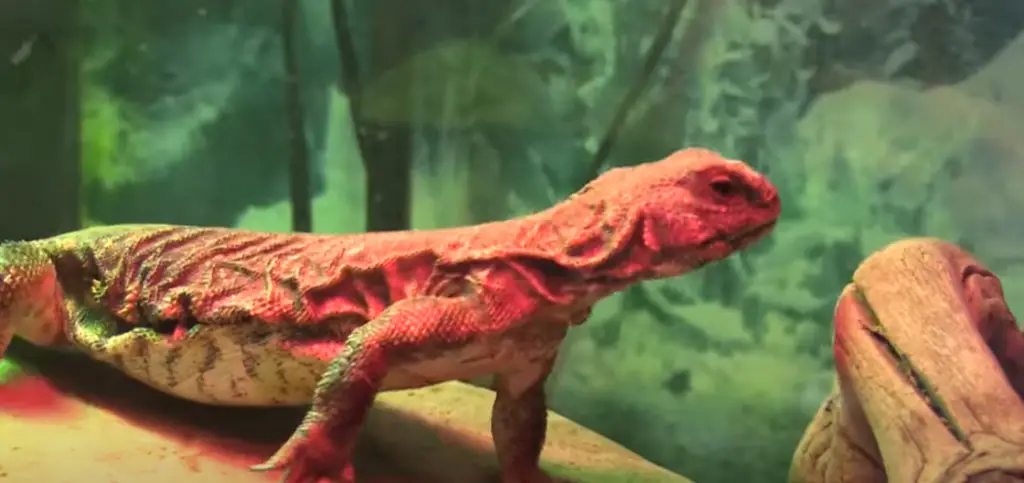
Another way to help your lizard stay warm is to provide it with a hide. A hide is a small shelter that your lizard can go into when it needs to warm up. You can make a hide by placing a cardboard box in your lizard’s enclosure. Place a heat lamp near the box so that the box will be warm. Your lizard can then go into the box when it needs to warm up.
You also need to make sure that the temperature of the room is warm enough so that your lizard can regulate its own body temperature. [2]
How Long Can a Lizard Go Without a Heat Lamp?
Lizards are ectothermic, which means that their body temperature depends on external sources of heat. They need to find an area with environments that are about 30 degrees Fahrenheit warmer than the ambient temperature inside the enclosure. This is called “basking.”
Without a heat lamp, your lizard will quickly become hypothermic and may even die. If you are going to be away from your home for a long time, it is important to have someone check on it while you’re gone. That way, if something goes wrong, they can help.
Whether you want a little or a lot of heat, there are several ways to provide it for your pet. You can use ceramic heating emitters in your bird’s cage and under their tank to warm them up. These will create enough heat without needing an overhead lamp. Basking rocks work well.
Use ceramic heat emitters to keep your lizard happy and healthy! These devices work by emitting infrared radiation, which is then absorbed by their body. The higher the temperature of a space without heating up the surrounding areas too much, it is a good situation for both you and the person you are with.
These lights are easy to install. Just make sure you have another source of light in case you need it, so you don’t get surprised by a bird. [1]
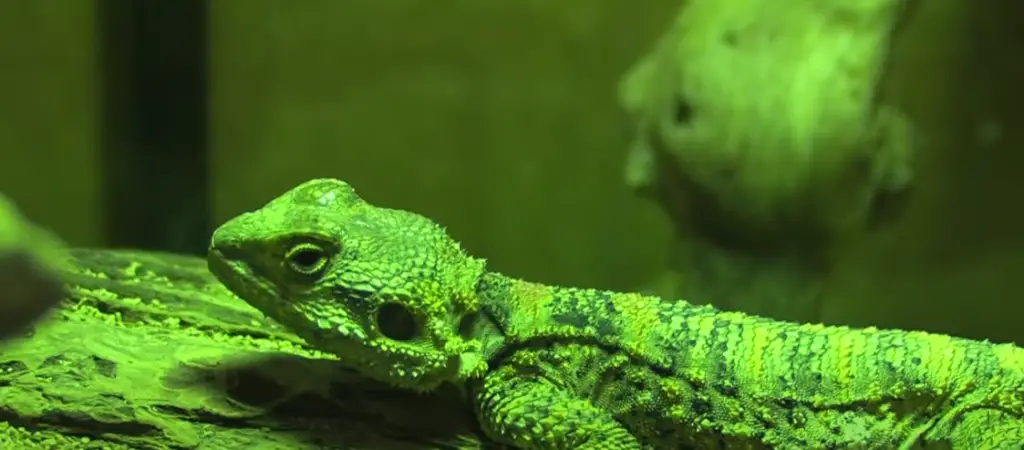
Ways To Keep Lizards Warm Without Heat Lamps
- The easiest way to keep your lizard warm is to use a heat mat or a hot water bottle. You can buy these at most pet stores. They work by providing a steady, low level of heat.
- Another way to keep your lizard warm is to use a light bulb. These bulbs give off more heat than fluorescent bulbs, and can be placed inside the lizard’s enclosure to keep it warm. You should also make sure that your lizard has a hiding spot where it can escape the heat if it gets too warm.
- One final way to keep your lizards warm is to use live plants.
Plants can help regulate the temperature in an enclosure, and they also provide a place for your lizard to hide. This is important because it can help make your lizard feel more comfortable and secure. [2]
Put Your Lizard in a Blanket
You can use a blanket to help keep your lizard warm. Make sure the blanket is not too thick or bulky, as this could make it difficult for your lizard to move around. You can also use a heating pad on a low setting to help keep your lizard warm.
Make sure that the cage or terrarium is not in direct sunlight, as this can make it too warm for your lizard. You can also use a heat lamp to help keep your lizard warm.
Use Heat Packs
If you don’t have a heat lamp, you can use heat packs to keep your lizard warm. All you need to do is put the heat pack in their tank and make sure it doesn’t touch them directly. You can also get creative and use a hot water bottle or even a hair dryer on low heat if you’re in a pinch.
Just make sure that whatever you use is safe for your lizard and won’t burn them. If you’re not sure, it’s always best to err on the side of caution and consult with a reptile vet before trying anything new. [2]
Use Hot Water Bottles
Keep your lizard warm by using a hot water bottle or heating pad. Place the heating pad or bottle under the tank so that you don’t bring the surroundings too much heat, and wrap anything electrical in towels for safety!
One of the most important things to consider when caring for your lizard is temperature. Lizards need a warm environment to stay healthy. If their tank is too hot or cold, they can get sick or die. You need to find a temperature that is comfortable for them, but not so hot that they get injured.
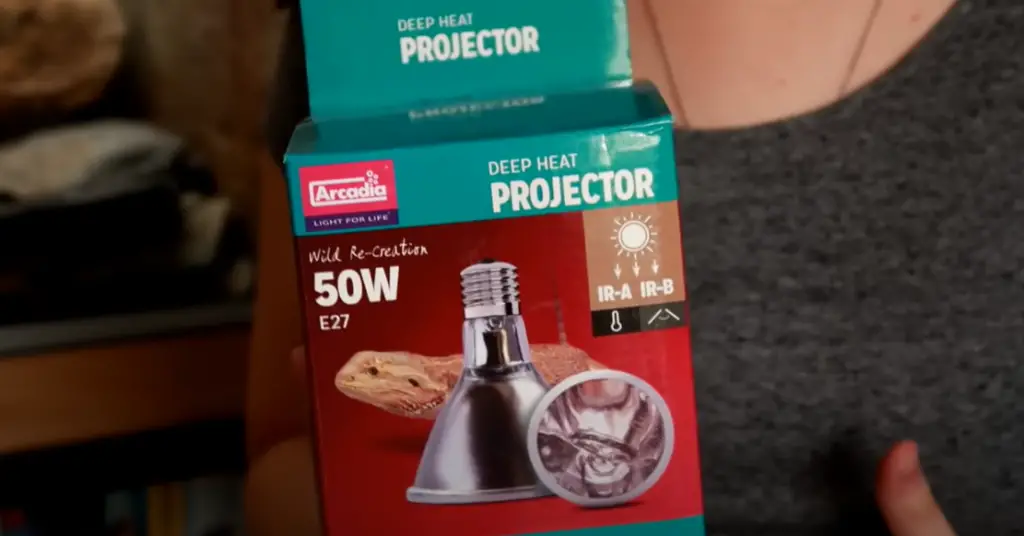
Get In the Car
To keep a chilly lizard warm, first get it in the car and turn up your heat. You can also use a blanket to trap your hamster. This will keep them warm from below and from the top. Make sure not to use a heavy blanket because it might make it hard for them to move and this could cause respiratory problems.
FAQ
What Can I Use Instead of a Heat Lamp for Reptiles?
There are a few different types of heat sources you can use for your reptile. These include ceramic heat emitters, under tank heaters, and basking spots. Each has their own benefits and drawbacks that you’ll need to consider before making a decision.
Ceramic heat emitters are one of the most popular options for reptile owners. They give off a steady, even heat that can be easily controlled with a thermostat. One downside to ceramic heat emitters is that they don’t create a basking spot for your reptile to warm up in.
Under tank heaters are another popular option for reptile owners. They attach directly to the underside of the tank and provide a steady source of heat. One downside to under tank heaters is that they can be difficult to control the temperature with.
Can a Lizard Survive Without a Heat Lamp?
The simple answer is yes, a lizard can survive without a heat lamp. In fact, many species of lizards are able to live their entire lives without ever coming into contact with one.
How Can I Keep My Bearded Dragon arm without a heat lamp?
There are a few ways that you can keep your bearded dragon warm without the use of a heat lamp.
- One way is to use a basking spot lamp. This type of lamp emits infrared radiation which will help to keep your bearded dragon warm.
- Another way to keep your bearded dragon warm is to use a ceramic heat emitter. This type of device will emit heat but not light, so it can be used at night.
- Finally, you can use a heat pad which will emit heat from underneath the tank.
Do Lizards Need Heat at Night?
Some lizard species require heat at night, while others do not. If you are unsure whether your lizard needs heat at night, contact your veterinarian or reptile specialist for advice.
Lizards that come from warm climates generally need less heat than those from cooler climates. Diurnal lizards, or those active during the day, also typically need less heat than nocturnal lizards, which are active at night.
If your lizard needs heat at night, you can provide it with a basking spot using an incandescent light bulb or a ceramic heat emitter. These should be placed on one side of the enclosure so your lizard can move to a cooler area if it gets too warm.
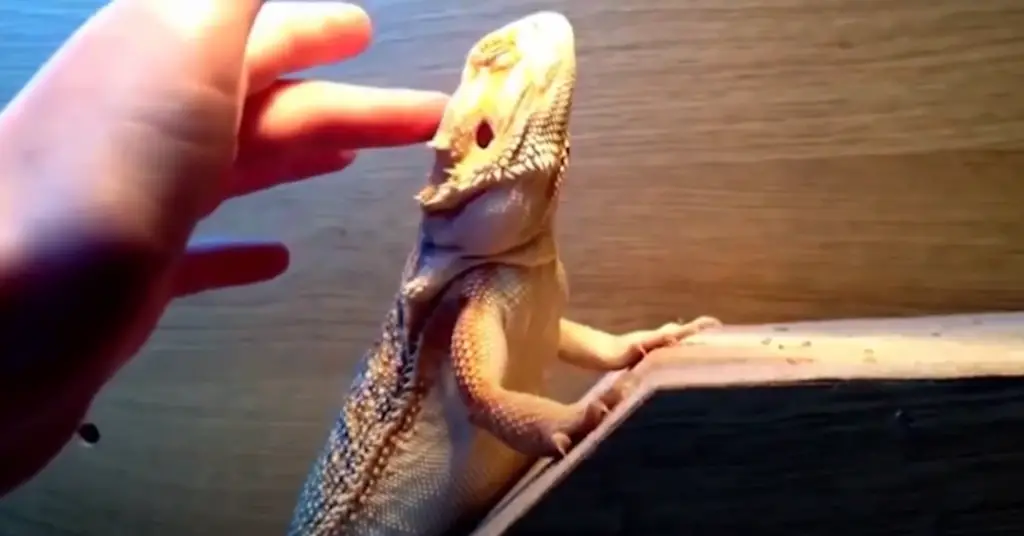
How Do You Heat a Cold Lizard?
There are a few methods that can be used to heat up a lizard.
- One is to use a lamp, but this isn’t always the best option.
- Another is to use something like a heating pad, which will provide a more constant source of heat.
If you’re using a lamp, make sure it’s not too close to the lizard. You don’t want to burn them! Place the lamp off to the side so that they can move closer or further away as needed.
A heating pad is a great option because you can control the temperature more easily. Just make sure it’s not too hot! You can test the temperature by placing your hand on it before putting the lizard on.
Can I Put a Blanket over my bearded dragon’s cage?
Yes, you can put a blanket over your bearded dragon’s cage. Be sure to leave some ventilation holes so your lizard can breathe. You may also want to put a heat lamp on one side of the cage so your lizard can move to the warm side if it gets too cold.
Useful Video: Best Way to Heat Reptile Enclosures: Heat Mat VS Ceramic VS Bulb
Conclusion
The next time you need to keep a lizard warm without a lamp, give one of these methods a try. If your cold lizard friend is feeling cold, you can help him or her get back to normal body temperature by using some creativity and basic supplies.
Have you tried any of these methods before? What do you think works best? Let us know in the comments below!
References:
- https://peteducate.com/how-to-keep-a-bearded-dragon-warm-without-a-heat-lamp/
- https://uniquepetswiki.com/keep-bearded-dragons-warm-without-heat-lamps/

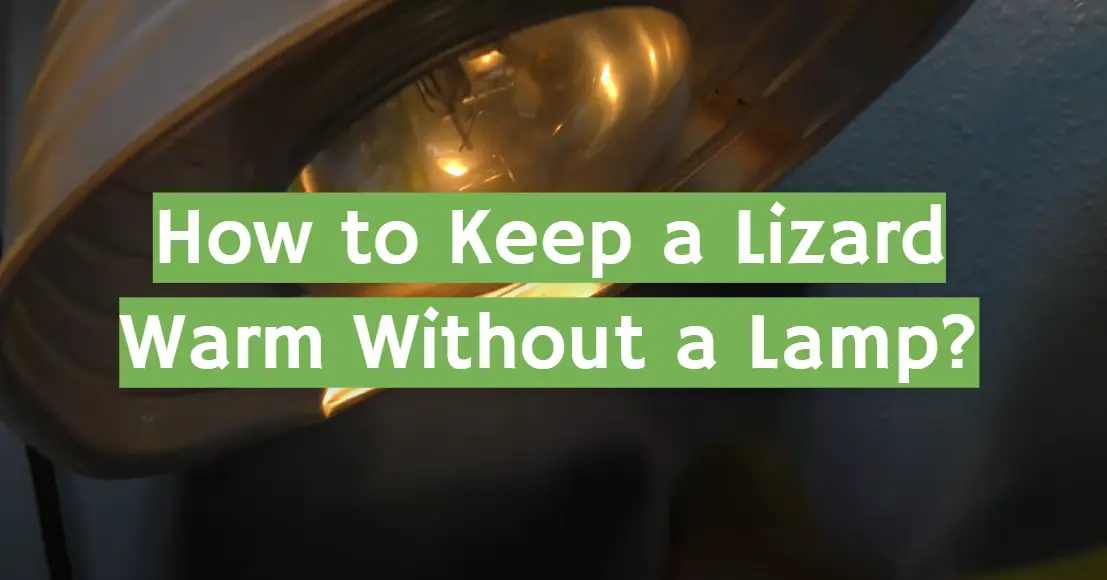


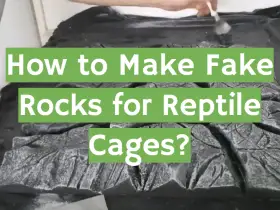

Leave a Review